Explore Seto Inland Sea
The Seto Inland Sea is the body of water separating Honshu, Shikoku and Kyushu, three of the four main islands of Japan. The sea serves as a waterway connecting the Pacific Ocean to the Sea of Japan and has long provided a sea transport link to important industrial centers and ports in the region, including Osaka and Kobe. The Seto Inland Sea region encompasses the sea, the coastal areas around it and hundreds of islands. Some of the most famous sights in the region are the Itsukushima Shrine, with its famous “floating” torii gate and the whirlpools in the Naruto Strait, but the region is also a destination for its quaint fishing villages, Japan’s largest national park and sites showcasing the world’s best contemporary artists.
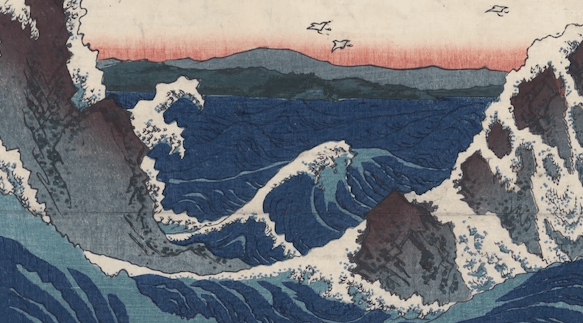
Whirlpools and Waves at Naruto, Awa Province, No. 55 in the series Famous Views of the Sixty-odd Provinces by Utagawa Hiroshige, c. 1853-1856
In this print, No. 55 in the series Famous Views of the Sixty-odd Provinces, Utagawa Hiroshige (1797-1858) depicts the famous whirlpools in the Naruto Strait. The channel – located between Naruto in Tokushima (on Shikoku) and Awaji Island in Hyōgo Prefecture – connects Japan’s Inland Sea with the Pacific Ocean. Twice a day, the tide moves large amounts of water in and out of the Inland Sea through the narrow strait, causing water to rush through the channel reaching speeds of around 10 miles per hour and creating some of the world’s strongest currents and spectacular whirlpools, known in Japanese as uzushio or uzumaki. Though Hiroshige had never visited the Naruto Strait, he illustrated the whirlpools on more than one occasion. Here, he cleverly uses the white of the paper in the claw-like crests of the waves and the spiraling swirls of the whirlpool to express the water’s immense energy and perhaps pay homage to Hokusai’s iconic Great Wave.
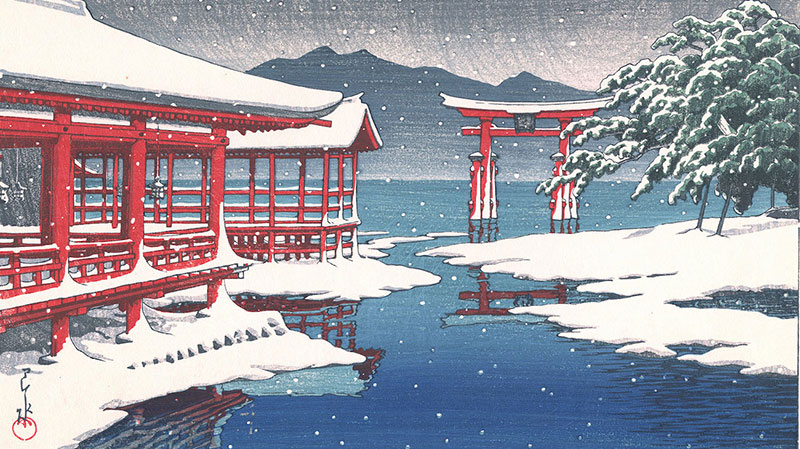
Itsukushima Shrine in the Snow by Kawase Hasui, 1932
Considered for centuries one of Japan’s “Three Scenic Views” (along with Amanohashidate north of Kyoto and Matsushima in Sendai), Itsukushima, better known as Miyajima (“Shrine Island”) is famous for the massive red torii gate that appears to float on the water. A shrine was established on the island as early as the 6th century, but this shrine is traditionally associated with the warlord Taira no Kiyomori (1118-1181) who oversaw the region and conducted maritime trade with other provinces. The shrine is dedicated to three sister goddesses of seas and storms, who offer protection against the destructive powers of water. This image of Miyajima by Kawase Hasui presents a rare view of the site shrouded in snow, looking even more serene than usual.
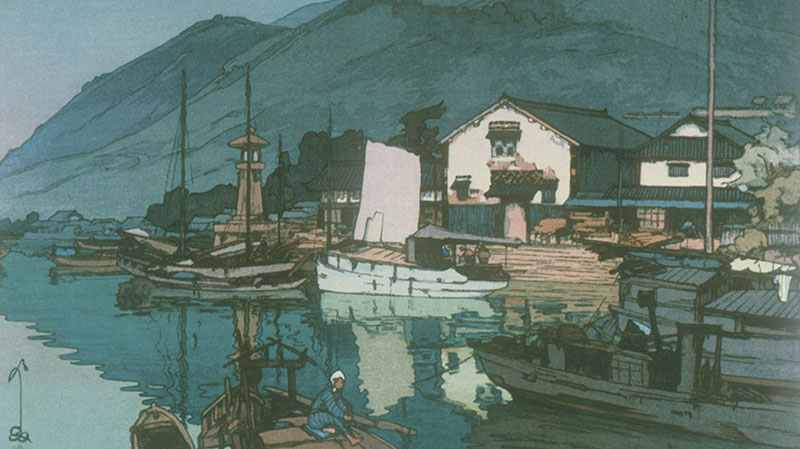
Harbor of Tomonoura by Yoshida Hiroshi, 1930
Tomonoura is a charming fishing town in modern Hiroshima Prefecture and looks out over the Seto Inland Sea. It has long been a prosperous port and is known for its unique circular harbor that is still preserved even though the port facilities have been modernized. Yoshida Hiroshi, who had mastered Western-style painting before he began designing woodblock prints around 1920, became well known for his landscape prints of Japan – as well as scenes from his travels to India, Pakistan, Afghanistan and Singapore. His tranquil scene of Tomonoura features several buildings and boats rendered in multiple layers of color to create the effect of a watercolor painting.
Places to Visit in the Seto Inland Sea Area
#ASMR Japan | Takaya Shrine
Known as “the torii gates to the sky,” Takaya Shrine sits at 407 meters atop Mt. Inazumi in the city of Kanonji, Kagawa Prefecture, located in the north of Shikoku island. Takaya Shrine, believed to house a god of abundant rice harvests, offers a panoramic view of the city below and the Seto Inland Sea, making the shrine an ideal location for capturing breathtaking sights or the perfect landscape photo. To the north, Naoshima Island is the site of internationally renowned modern art pieces, such as Yayoi Kusama’s Yellow Pumpkin and Red Pumpkin, and Sou Fujimoto’s Naoshima Pavilion.
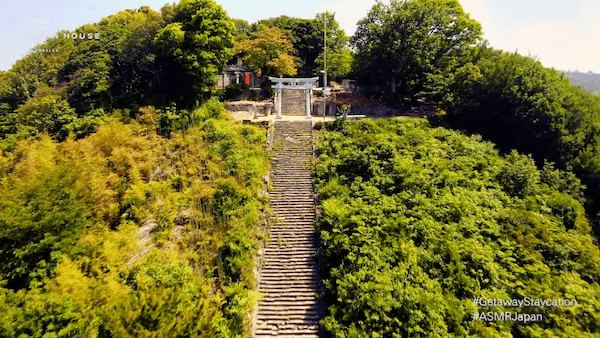
Explore Each Region
Return to Part 2
Nature: The Beauty of the Japanese Landscape
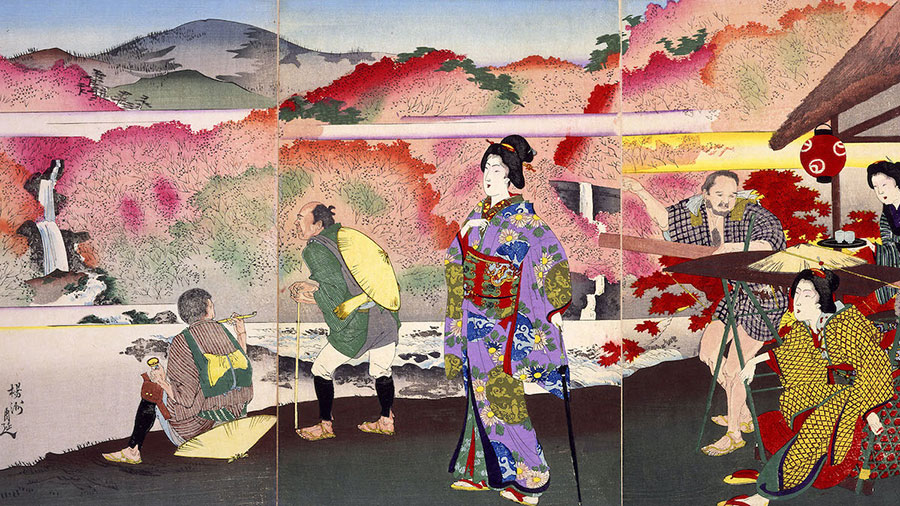
Main Exhibition & Virtual Tour
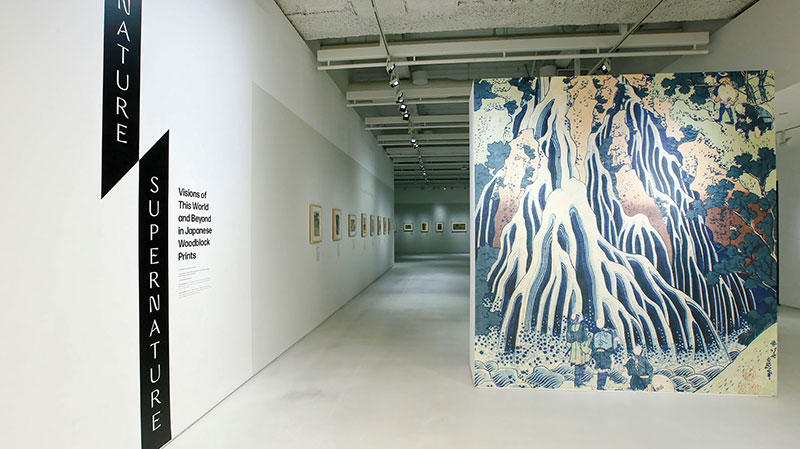
*Note: Japanese names in this exhibition are written in the traditional Japanese order, with the family name first and personal name last. However, if an artist has come to be known by a single name, (e.g., Hokusai and Kunisada) that name will be used for subsequent mentions.

